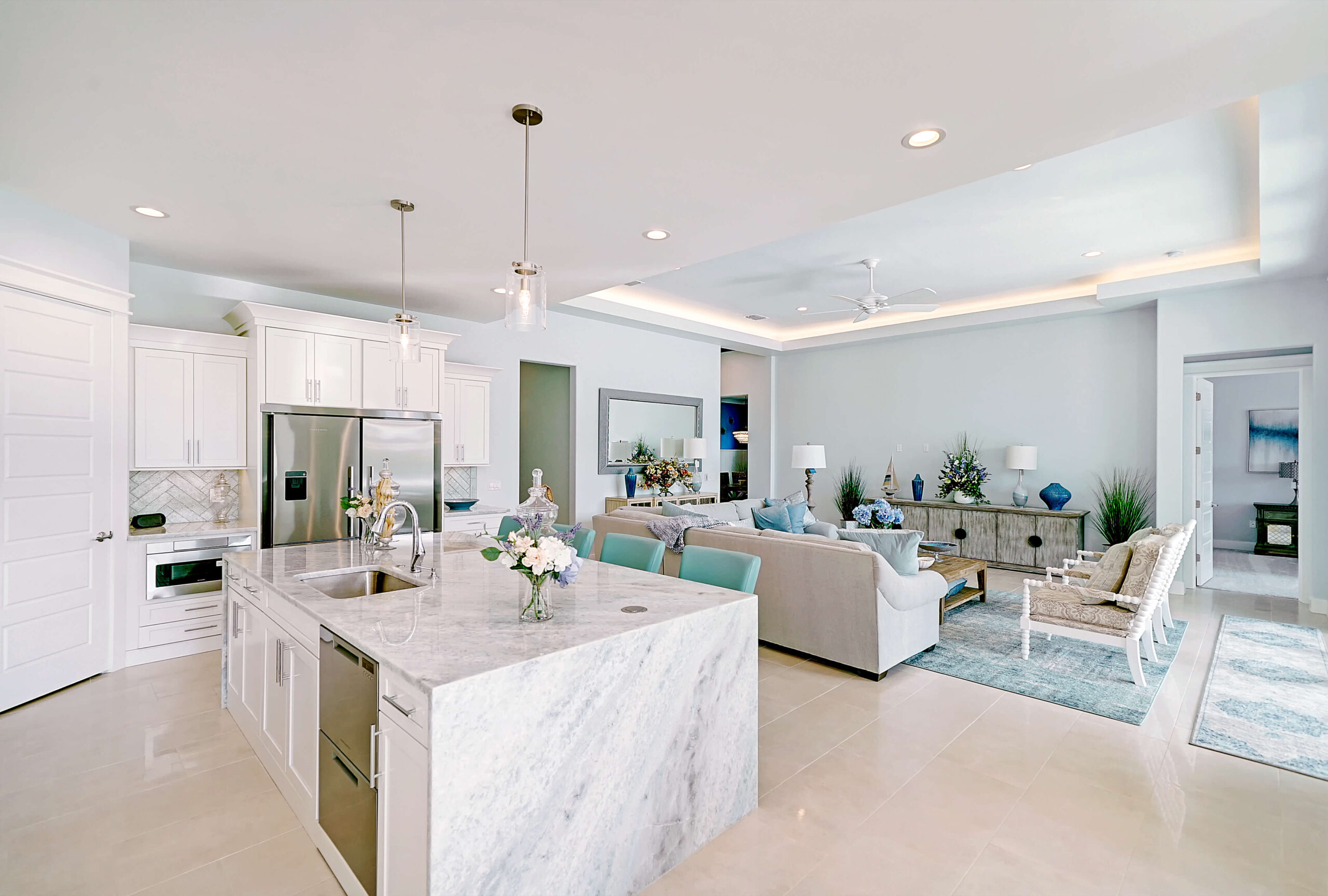Putting a landscape design together takes a lot of preparation and know how. Unfortunately, homeowners are bombarded with media that magically transforms properties in thirty to sixty minutes, yielding stunning results that isn’t possible without the help of dozens and dozens of crew members. That phenomenon gives homeowners the misconception landscaping is not difficult. Of course, it’s often the hard way that notion is dispelled and that’s when disappointment sets-in.
Landscaping, like anything else, is a process, and, it can be a complicated and complex one. Breaking it down to fundamentals is essential to getting the right results. By following some basic principles, do-it-yourself types can produce a great design that really impresses the eye and serves in a functional capacity.
Where many people go wrong is going all out and going too big. It’s best to start small and work up in an incremental manner, developing on a particular theme and keeping it flush with continuity. It’s wanting the perfect design and not seeing the forest for the trees which causes mistakes to be made and that will cost a lot more time and money. Settling on a concept and executing in a step-by-step fashion will yield the best results, not trying to do it all in one shot.
Fundamental Landscape Principles
Professional designers blend five basic elements into each of their projects: color, or more particularly, how colors relate to one another, form, line, scale, and texture. It’s the relationship and balance between these things which serve as the cornerstones of great landscapes. Conspicuous by its absence in those five elements is function, and that’s likely why do-it-yourself homeowners focus just on aesthetics only to learn later-on that their new design is lacking. For instance, let’s take a scenario in which you install a fire pit that’s right in the middle of your yard, only to discover it’s now in a place where keeping it lit is problematic because wind routinely blows strong over it.
Do-it-yourselfers must first learn the basic designing elements that underlie the discipline of landscape design. These fundamental elements will then serve as building blocks for learning and implementing the more advanced principles for designing a garden in the backyard. These tried and true principles are the cornerstones of the world’s picture-perfect gardens. —Landscaping, About.com
Another example would be placing seating on an uncovered patio to entertain, only to learn that it’s arranged in such a way that it’s right in the heat of the sun and, too far away from the grill. You have to think beyond beauty and about how some elements will serve a purpose. If you don’t plan every aspect out, you’ll be left with having to sort it out later and could even face having to completely uninstall something to correct the situation and then put it back.
Basic DIY Landscaping Tips and Tricks
To get started, you’ll need a game plan. Begin with your budget, because that’s ultimately will determine how big and grand your design will be. Again, start small, you can always add to it later-on and make improvements and embellishments as time goes by until you get it to your liking. Once you have a budget established, then do the following:
- Write out a list of your needs first, wants second. Prioritize what you’d like to include and start with your must-haves. If you want to create a space that’s going to be a place to entertain, you’ll likely need a grill, preparation surfaces, and serving platforms. Then, include the things you want, after you’ve got the essentials.
- Learn the sun and wind patterns. This is a big problem that often goes unknown until you’ve wandered into the know. Before you put anything in permanently, take some time to learn the sun and wind patterns and save yourself the grief, frustration, time, and effort.
- Work with your yard in varied ways. Think about your entire space in sections. Put seating here, hardscaping there, a water feature over in one corner, then rearrange all of them to find the best ebb and flow. You’ll probably discover there are better ways to arrange your features.
- Begin small. Okay, so this point has been made, but it bears repeating. Starting small is a sure way to avoid making a monumental mistake, or two, or three, or more.
- Create around a focal point. It could be a fire pit, a waterfall, a flower garden, anything that stands-out. Work out from the focal point and keep the look and feel continuous.
- Strike a balance. You should create a flow of color and avoid monotony. Too much of one thing will be a bad thing and too little might make something look out of place.
Last but certainly not least, be willing to change. If something just doesn’t seem to fit the theme or is too much work to put in, then let it go and take a different direction.


